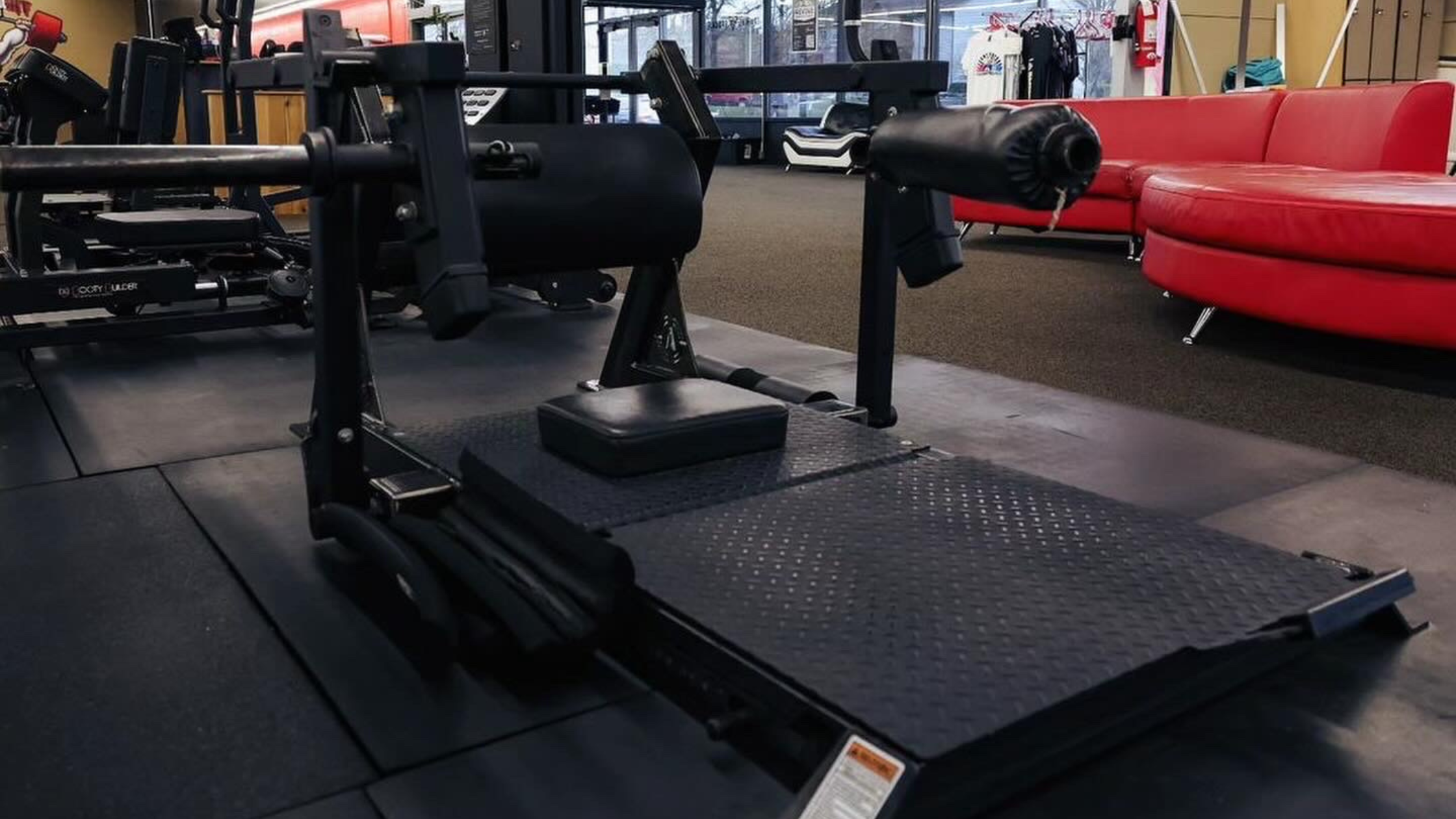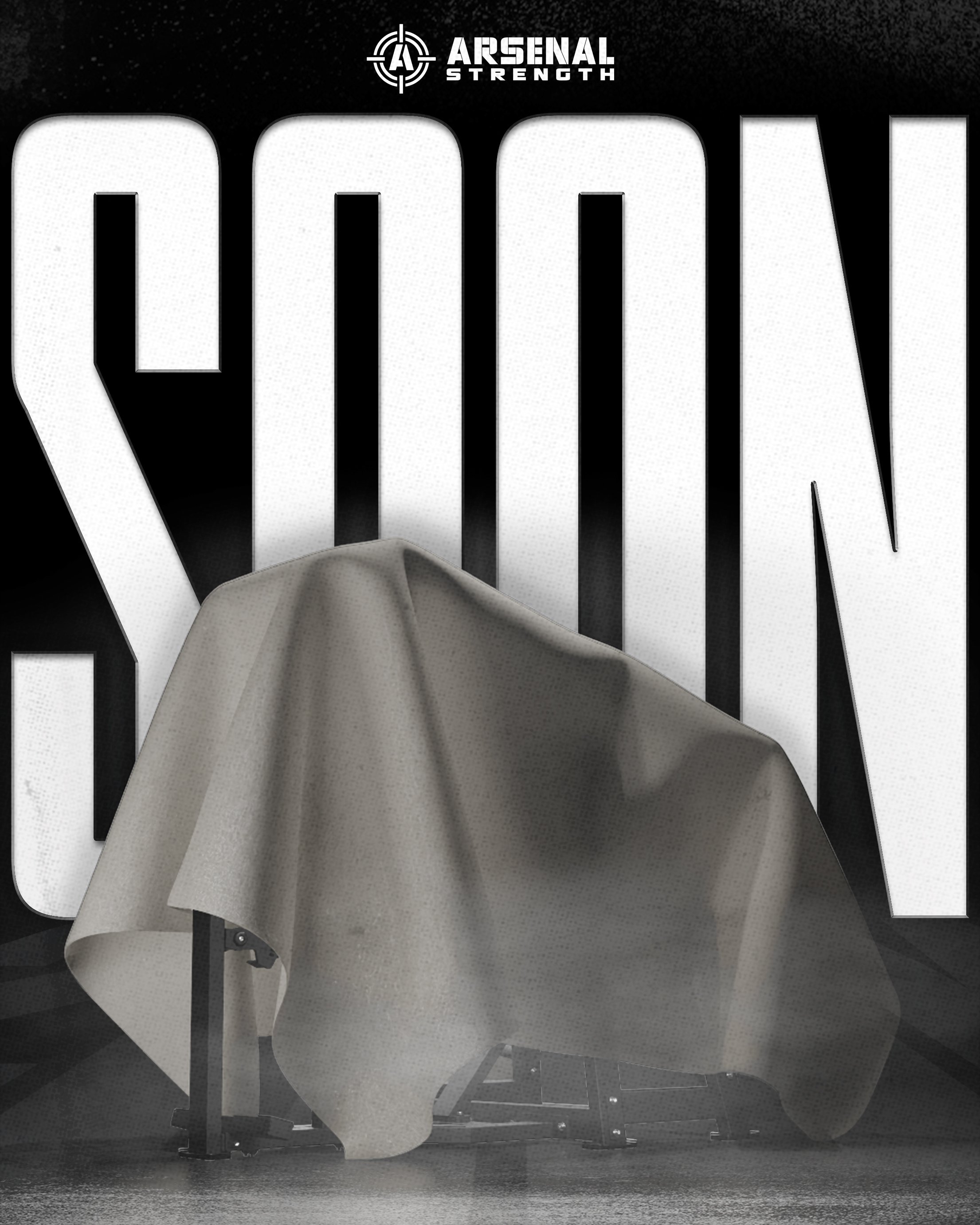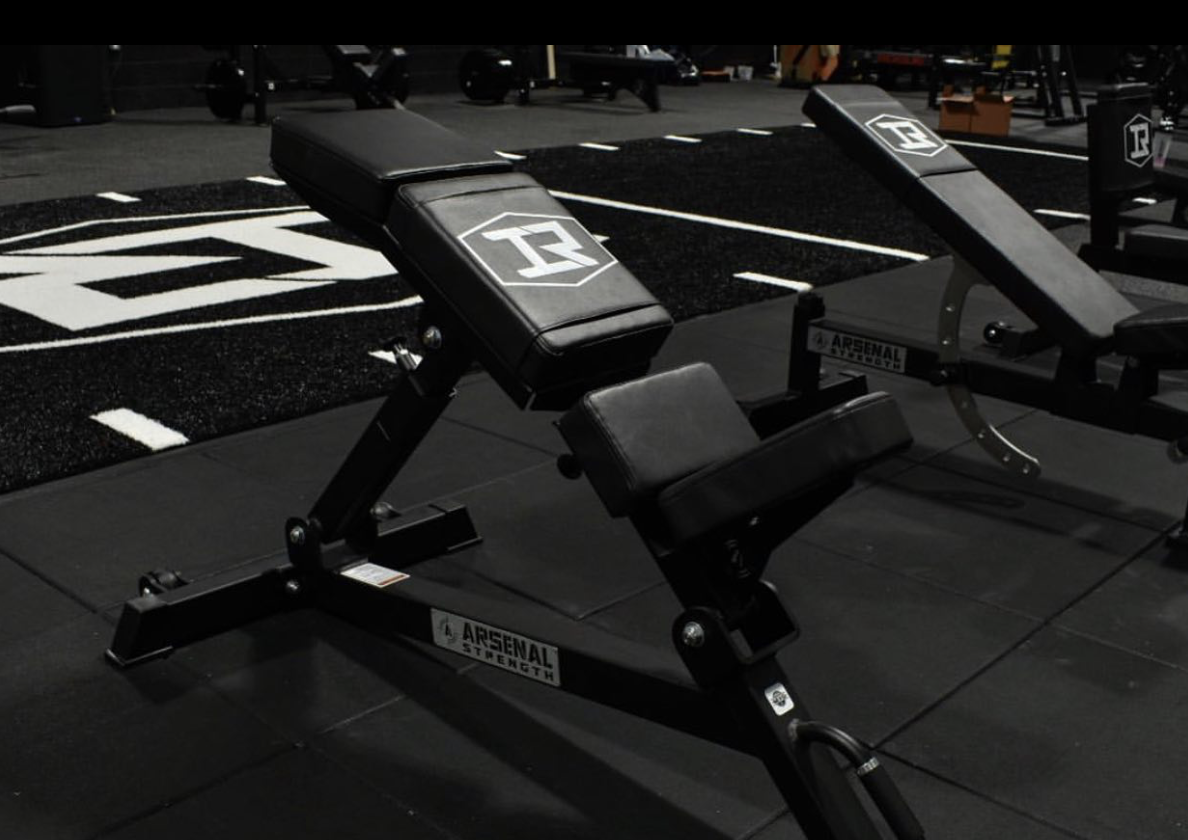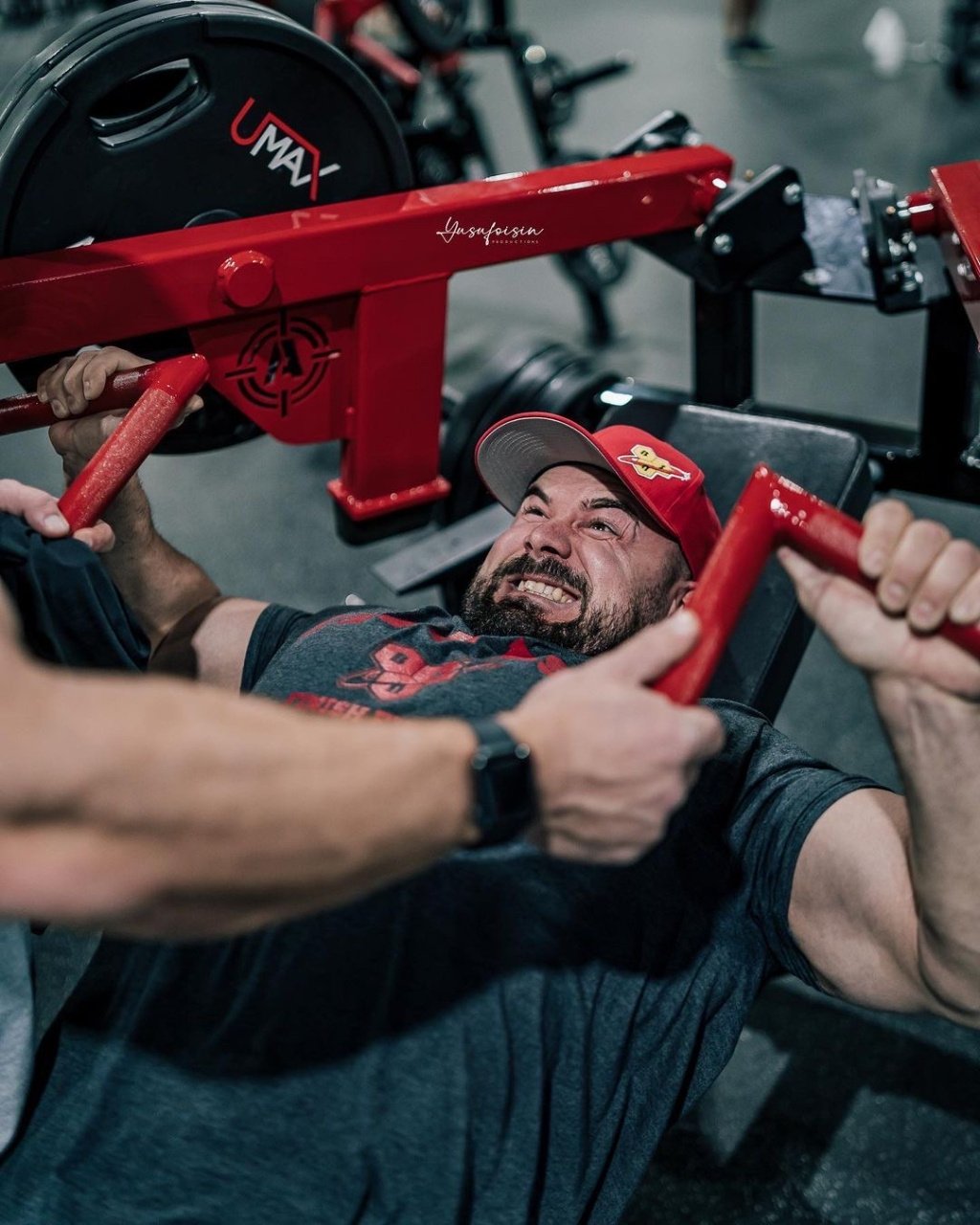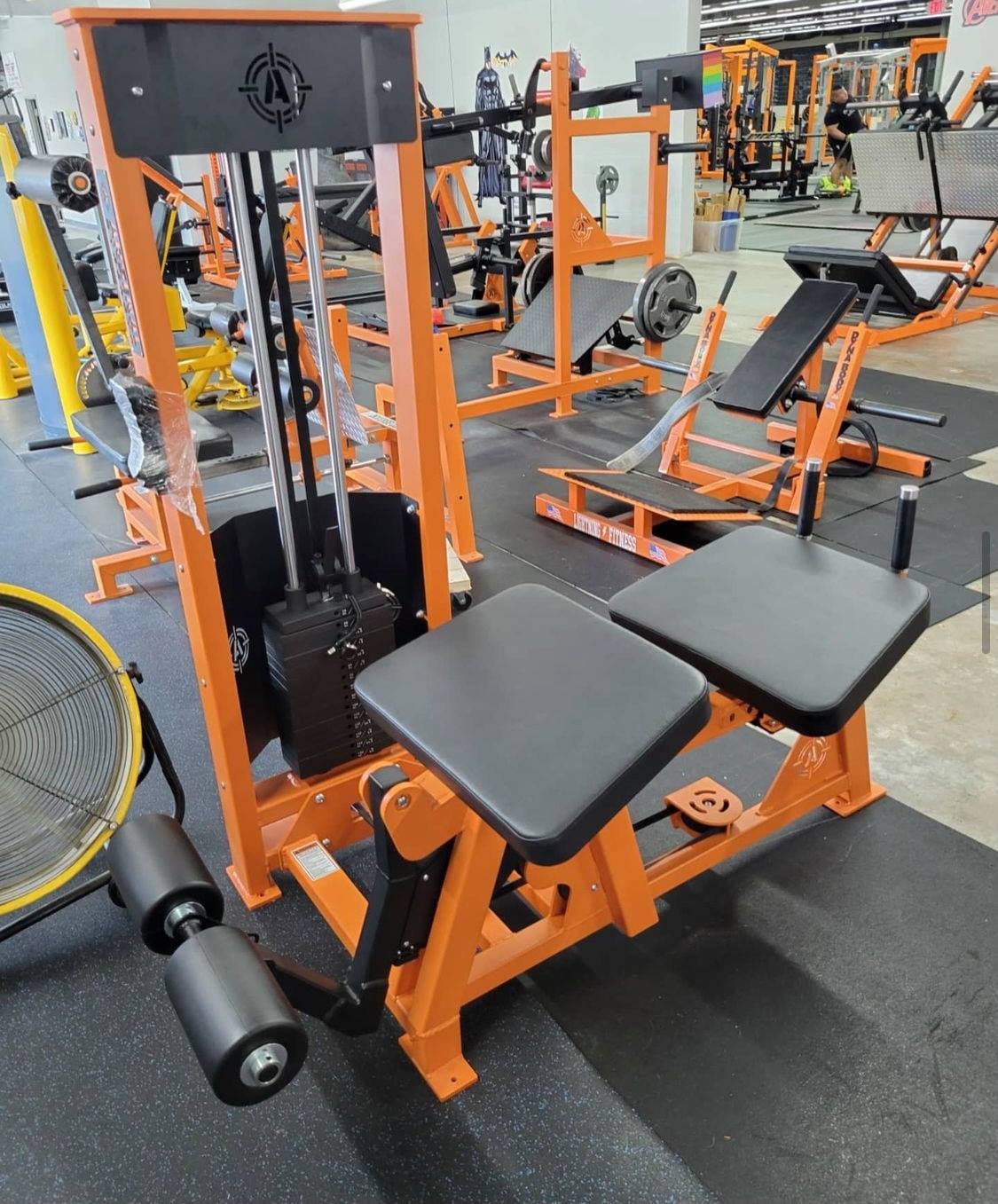Mastering The Hip Thrust With Plate Exercise
Unlock the full potential of your glutes with the hip thrust with plate. This guide is crafted for those seeking to tighten their technique, scale their strength, and elevate their exercise arsenal. Step by step, we’ll walk you through how to execute the hip thrust with precision, select the right weight, and amplify your results—all while keeping your training safe and effective. Let’s thrust forward into stronger, sculpted glutes.
Hip Thrust Exercise Tips:
- Incorporating weight plates into hip thrusts significantly enhances muscle activation, targeting not only the glutes but also hamstrings, quads, and core, and allows for progressive overload to ensure continuous strength gains.
- Proper technique in hip thrusts, including foot placement, spine alignment, and a controlled tempo, is crucial for targeting the glutes effectively and avoiding undue stress on other muscle groups or the lower back.
- For advanced training, variations such as single-leg hip thrusts and incorporating paused reps or slow eccentrics can maintain the challenge, address imbalances, and further stimulate muscle growth and strength.
Taking Your Hip Thrust to the Next Level: Plate Variation
Transforming the hip thrust into an even more potent exercise for developing robust glutes is accomplished by integrating weight plates. The addition of these weights not only intensifies the workout but also initiates a comprehensive engagement of various muscle groups, including:
- gluteal muscles
- hamstrings
- quadriceps
- core muscles
- hip adductors
Progressing from the basic bodyweight hip thrust to incorporating a barbell transforms this movement into a significant strength-enhancing endeavor. As you perform each repetition of barbell hip thrusts, you edge ever closer to achieving well-defined, powerfully built glutes that are both strong and aesthetically pleasing.
Benefits of Using Weight Plates
For those devoted to strength training, incorporating weight plates into your hip thrust exercise is a transformative experience. This addition of heavy weight turns the movement into an intense gravity-defying endeavor that promotes substantial muscle growth. The ascent from gentle elevation to challenging peak dramatically impacts your gluteus maximus – and you’ll notice the difference. To elevate this impact, consider integrating a hip thrust machine for enhanced results in your strength routine.
In particular, during the hip thrust exercise with added weight plates, it’s the oft-overlooked lower regions of your gluteus maximus muscles that reap significant benefits from such focused resistance. And paramount for muscle development is progressive overload—this key concept entails incrementally increasing the weight over time so that your muscles are consistently faced with new challenges. As they adapt and overcome these demands, you see measurable improvements in both muscular resilience and appearance—a testament to diligent effort.
Choosing the Right Weight Plate
When starting with hip thrusts using a weight plate, it’s essential to choose wisely as not every plate suits everyone. Your chosen weight should be sufficient enough to make your muscles feel the effort but still let you finish your set with one or two reps left before muscle failure. This approach challenges you adequately without pushing too far and causing harm.
Progressing in hip thrusts isn’t about lifting the heaviest possible weight right off the bat. Instead, it is about gradually increasing intensity that matches your personal growth in strength.
Proper Technique for Hip Thrust with Plate
When engaging in the dumbbell hip thrust, the significance of proper technique cannot be overstated. It coordinates your muscular movements, guaranteeing that each hip thrust is performed with exactitude and intentionality. The weight plate situated atop your hip bones integrates seamlessly into your body’s motion as you elevate your hips towards the ceiling. Excelling in this exercise, and especially when adding extra weight, goes beyond simple repetition. It evolves into a complex discipline requiring nuanced understanding of where to position one’s feet, how to align one’s spine, and how critical it is to contract the glutes effectively.
A well-executed hip thrust can be characterized by key elements: maintaining a tucked chin throughout, planting heels firmly on the ground, and moving at a pace that allows for control—all crucial steps to ensure that it’s primarily your gluteal muscles rather than your lower back doing most of the work during this strengthening movement.
Setting Up the Exercise
Ensuring that your glutes are the star performers during hip thrusts begins with laying solid groundwork. Your shoulder blades must be firmly rooted, providing the essential support for elevating to new heights through powerful hip action. The weight plate, a reliable ally in this exercise, should sit snugly on your hips—steer clear of allowing it to stray towards either the lower back or belly area—to fully harness its contribution.
Foot placement should not be overlooked. Though it may appear inconsequential at first glance, its role is pivotal in keeping the glutes as headliners. A position too near shifts focus to your quadriceps while setting them too distant gives undue attention to hamstrings. By positioning your feet just slightly past alignment with your knees, you ensure that each hip thrust magnificently showcases what you’re truly aiming for: peak engagement and strength in those hardworking glute muscles.
Executing the Movement
As the spotlight shines, it’s your moment to shine. Picture your spine as steadfast and unwavering as a time-honored oak – stable and robust. Activate those powerhouse glute muscles of yours, ensuring they don’t fall into the shadow cast by overzealous quads and hip flexors. It’s an intricate performance that demands complete participation with an unshakeable focus on the muscle-mind bond.
Rising is key, but it’s in the controlled easing back down to where you started from that true transformation takes place. During this phase lies the opportunity for your muscles to both elongate and fortify themselves—sculpting out strength along with a well-defined shape sought after by many. And let’s not forget: Your heels are like roots. Keep them planted firmly so as to preserve both flawless execution of movement while sustaining optimal engagement within those targeted hip muscles.
Common Mistakes and How to Avoid Them
Even those well-versed in glute exercises can fall victim to the subtle mistakes that plague hip thrusts. Improper placement of weight plates can turn an otherwise productive exercise into a futile endeavor or, even worse, cause harm. Similarly, placing your feet incorrectly could unintentionally shift the workload from your glutes to your hamstrings and quadriceps – which are not designed for this task.
Attaining true proficiency in targeting the glutes requires maintaining a neutral spine and keeping the core activated like a fortified gate—this ensures stability and directs attention exactly where it’s needed. Achieving full range of motion is crucial. Anything less than complete extension during your thrusts is akin to embarking on an adventure without ever sailing out from port—a squandered chance at fully developing those glute muscles.
Incorrect Plate Placement
The center of gravity in your enhanced hip thrust routine is the weight plate, yet if you position it incorrectly, it’s as disruptive as a wrongly placed cornerstone within an arch. When placed on either the stomach or lower back, not only does it cause discomfort but also detracts from the full potential of the exercise like discordant notes disturbing a symphony.
To rectify this? Positioning demands attention: align the plate so that it nestles gently against your hip bones, much like an artist molding with precision to ensure both comfort and efficiency are achieved. Here lies the pivotal area for power generation and realizing capability—not amidst the sensitive zones of your abdomen nor across the susceptible stretch of your lower back.
Rushing the Movement
In today’s fast-paced society, the temptation to hurry can unfortunately spill into your exercise regime. When it comes to performing hip thrusts, speed should not be a priority. Quick and uncontrolled motions compromise the effectiveness of this workout and invite potential injuries with open arms.
Honoring the rhythm required for a successful hip thrust is key. It’s about executing each repetition with precision and control that allows all muscles involved in the movement to become fully activated. Imagine orchestrating a movement pattern similar to how smoothly a river shapes its way through rugged terrain—purposeful, forceful, and unwaveringly consistent.
Progressions and Variations for Advanced Training
After becoming proficient in the fundamental techniques of hip thrusts, there are an array of advanced options to enhance your glute training. These progressions keep your workout engaging and stimulating, ensuring that your muscles are constantly challenged to promote continued improvement.
Incorporating alterations such as single-leg hip thrusts and holding repetitions at their peak can add a dynamic twist to the core element of your exercise regimen. Such modifications inject fresh excitement and complexity into the mix, providing novel stimuli for muscle growth akin to adding exotic seasonings that enrich a favorite meal.
Single-Leg Hip Thrust with Plate
The principle that more can be achieved with less is perfectly embodied by the single-leg hip thrust exercise incorporating a weight plate. When you isolate one leg during this movement, it’s not about reducing the challenge but rather intensifying it for the active leg. With your free leg poised straight out as if leading like a ship’s prow through turbulent waters, it navigates while the engaged leg confronts and manages the substantial demand imposed by the weight plate. Renowned as well for being an excellent hip thruster routine, this workout primarily targets and enhances your glutes and hamstrings.
This specific form of exercise is a deliberate endeavor that goes beyond mere strength enhancement. It effectively highlights any muscular asymmetries you may have. By revealing these disparities, they allow you to confront them directly – facilitating development towards a more evenly balanced and potent body structure.
Paused Reps and Slow Eccentrics
In the art of muscle sculpting, it’s the fine touches that matter most, notably paused reps and slow eccentrics. Employing these methods enhances your work with intricate detail akin to an artist adding deliberate strokes to a painting. Paused repetitions are like capturing time in its tracks—maintaining a peak contraction—that amplify the intensity and forge muscle fortitude comparable to robust battlements.
Similarly, slow eccentrics act as a measured lower. They are reminiscent of reverberating sound within a gorge, extending the duration of muscle tension and expanding your strength boundaries.
Integrating Hip Thrust with Plate into Your Workout Routine
Incorporating the hip thrust with a plate into an overall exercise routine is essential for achieving significant lower body strength. To maximize its effectiveness, it’s critical to balance both the frequency and volume of workouts while allowing enough time between sessions for recovery and muscle development.
This exercise should be performed in conjunction with other training activities, ensuring synchronization within a full-body workout program or as a peak movement succeeding compound exercises such as squats and deadlifts.
Frequency and Volume
Your hip thrust routine’s pace should align with your body’s natural rhythm. Starters begin their journey with a soft introduction, performing 3 sets of 12 repetitions as they ease into the forthcoming epic of power development. As you progress, intensify the routine to include 3-4 sets of 6-10 reps – at this stage, incorporating more weight serves as an increasing force within your workout story, pushing boundaries without crossing limits.
Target an optimal frequency of practicing hip thrusts about 2-3 times weekly by adjusting intensity in harmony with your distinct fitness capacity and aspirations.
Combining with Other Glute Exercises
Imagine your exercise routine as an intricate masterpiece, where the hip thrust and glute bridge are key elements interlaced seamlessly with other movements like squats and deadlifts that target the hip extensor muscles. This combination forges a complex tapestry of strength and definition enveloping your lower body.
By pairing the hip thrust with exercises such as Bulgarian split squats and Romanian deadlifts, you’re essentially putting finishing touches on an artistic work. Each movement contributes to magnifying the impact, sculpting a lower body that’s not only visually striking but also robust in its functionality.
Master The Hip Thrust Exercise
We’ve delved deep into the significant impact that incorporating weight plate hip thrusts can have as part of your glute training routine. Starting from choosing the appropriate weight plates to perfecting your form, we’ve discussed how this exercise has the potential to revolutionize your lower body strength and aesthetics. The essential elements for success are unmistakable: maintain proper form, gradually increase resistance, and strategically include this movement in your workout regimen—these fundamental principles will bolster you on your journey towards top-notch performance.
Heed this motivational call—to march forth with confidence into future sessions armed with newfound insight and enthusiasm for every rep of hip thrusts. It’s a blend of commitment and precise execution of techniques that paves way for advancements in strengthening and reshaping one’s lower body. Absorb these teachings. Let them ignite an unwavering passion within you because a fortified, well-defined physique is just around the corner awaiting discovery.
Frequently Asked Questions
How often should I perform the hip thrust with plate exercise?
You should perform the hip thrust with plate exercise 2-3 times per week to allow for muscle recovery and growth between sessions.
What is the correct way to place the weight plate during the hip thrust?
To maximize the exercise’s effectiveness and ensure comfort, secure the weight plate across your hip bones rather than on your stomach or lower back.
Can I incorporate hip thrusts with plate into my full-body workout regime?
Certainly, for achieving the best outcomes in your full-body exercise regimen, you can integrate hip thrusts that utilize a weight plate.
What are some common mistakes to avoid during the hip thrust?
To optimize the benefits of your hip thrust exercise, be wary of typical errors like misplacing the plates, hastening through the movement, positioning your feet improperly, and failing to keep a neutral spine.
Remembering these points will help you make the most out of your workout routine.
Are there any advanced variations of the hip thrust that I can try?
Indeed, incorporating additional weight and experimenting with variations like slow eccentrics and paused repetitions during single-leg hip thrusts can amplify the intensity of your exercise routine, thereby fostering increased muscle growth in the hip area.
Additional Hip Thrust & Glute Machine Resources:
Arsenal Strength Reloaded Glute Bridge Machine
Reloaded Glute Bridge Machine In Action

